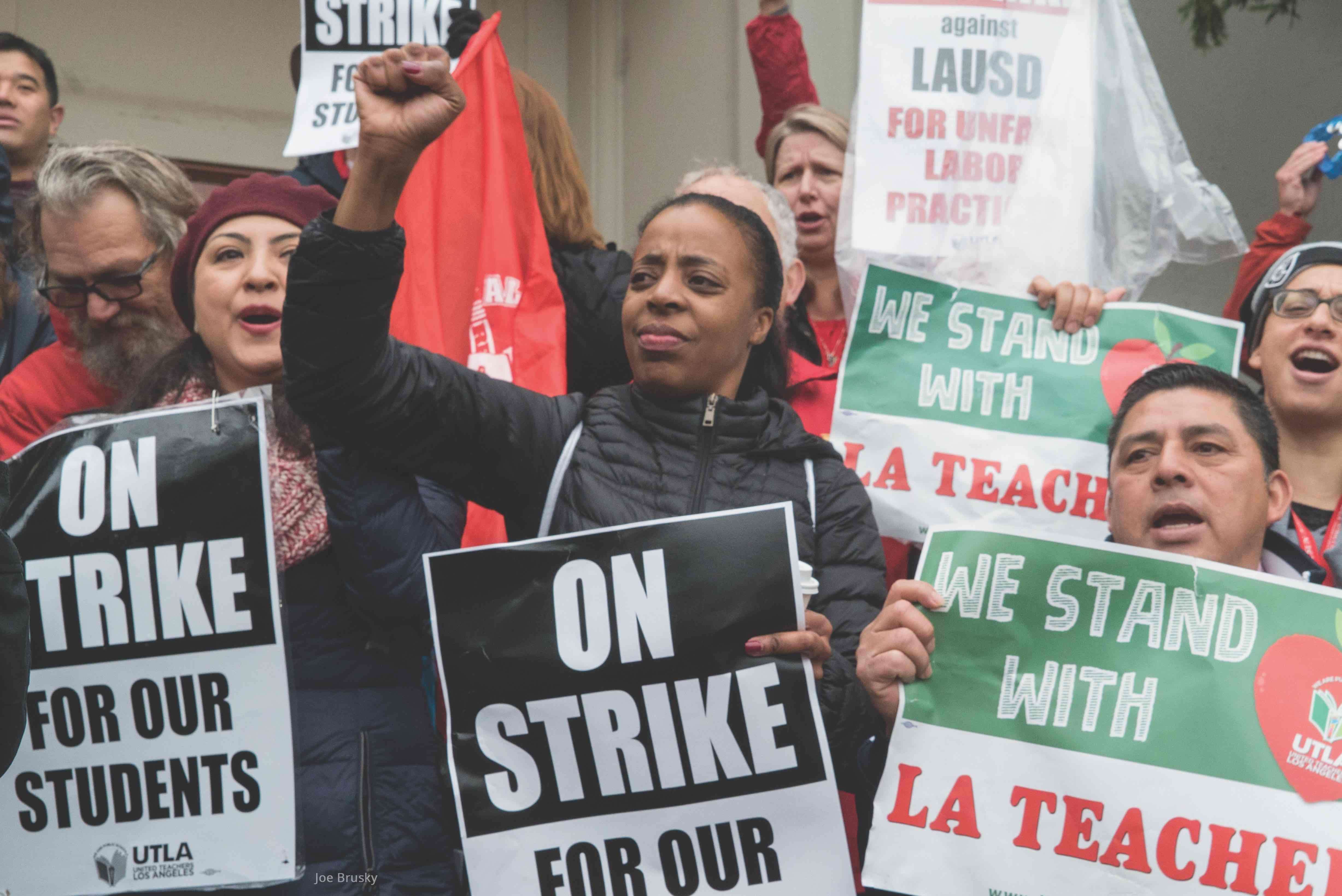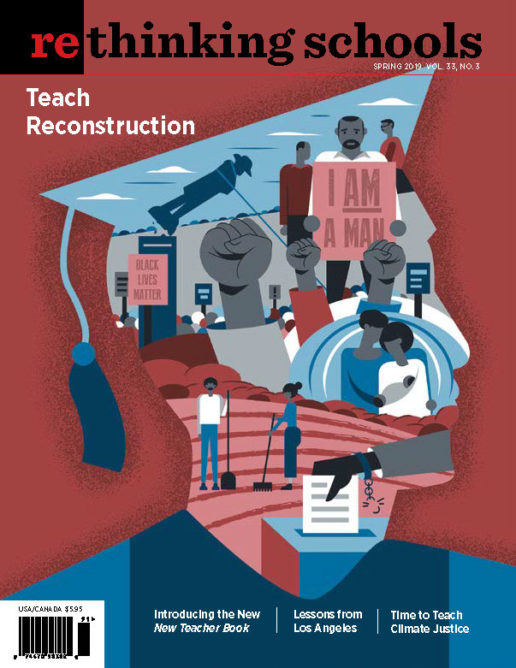‘Billionaires Can’t Teach Our Kids’
Why the Los Angeles teachers' strike was historic
Illustrator: Joe Brusky

bit.ly/Brusky_Photos
Los Angeles wasn’t just another teachers’ strike. Of course, many of its components were similar to the work stoppages we’ve seen sweep the nation since West Virginia: seas of educators in red; joyous picket lines filled with music and dancing; strong female teacher leaders; an outpouring of support from parents and students; and major contract wins.
But the victorious January 2019 work stoppage in Los Angeles has three key particularities that make it a turning point in the nationwide battle to save public education.
1) Los Angeles Was a Blue State Strike
All last year, media pundits and liberal politicians attempted to frame the strikes as red state revolts. Educator dissatisfaction was supposedly limited to Republican-dominated regions where teacher pay ranked lowest in the nation.
Los Angeles has made it clear that the problems facing public school educators and students — including high class size, underfunding, over-testing, low wages, and privatization — are no less deep in cities and states run by the Democratic Party. In fact, the number of charter schools doubled under the Obama administration and privatization has generally gone furthest in blue states.
To win its strike, United Teachers Los Angeles (UTLA) had to directly confront powerful forces within the Democratic Party, including billionaire investor-turned-superintendent Austin Beutner. In so doing, UTLA has inspired educators across the nation to follow suit: Denver just won their strike and, at the time this piece was written, Oakland teachers were also striking and a walkout loomed in Sacramento.
This surge of workplace actions will continue to heighten the contradictions between the Democratic Party’s base and its corporate-bought leadership. Nothing less than unqualified support for all educators’ demands — including a moratorium on charters, tax hikes on the rich, and the legalization of public sector strikes — should be demanded of every Democratic contender for president.
2) Los Angeles Was the Best Organized Strike in Decades
Although last year’s explosive walkouts in West Virginia, Oklahoma, and Arizona caught the powers that be by surprise, Los Angeles teachers were forced to confront a powerful, determined, and well-funded opponent. It was no easy task to defeat Beutner’s coterie of billionaire privatizers, who had recently captured the city’s schools with the explicit goal of radically dismantling and downsizing the second-largest school district in the country.
Faced with such enemies, and situated in a geographically sprawling city, educators in Los Angeles could not have won the huge gains that they did without having first cohered themselves into a powerfully organized structure. It’s to the immense credit of UTLA’s elected leadership and staff that they initiated one of the most intense, and most successful, labor organizing drives in generations.
Anybody interested in how to revitalize the labor movement should take detailed notes on the UTLA leadership’s four years of systematic organizing that culminated in January’s strike. Some of their key initiatives included: organizing a rank-and-file caucus in 2014 to win the union’s leadership; hiring great staff to serve as a scaffolding for rank-and-file empowerment; building deep workplace action teams; consistent organizing with parents, students, and community organizations; foregrounding broad “common good” demands; highlighting the fight for racial justice; and organizing numerous escalating “structure tests” — initiatives like rallies, pledge cards, and strike votes that promote and measure workers’ degree of organization and resolve.
The mechanics of what UTLA did were not new — many of them, for example, were also used to great effect in the 2012 Chicago teachers’ strike. Yet the intensely systematic nature of Los Angeles’ organizing, and the depth of the support generated, was unparalleled.
There’s no need for teachers in other cities to reinvent the wheel: study Los Angeles.
3) Los Angeles Put the Privatizers on the Defensive
For well over two decades, billionaires like Eli Broad, the Walton Family, and Netflix CEO Reed Hastings have poured money into privatizing public schools. Behind a veneer of philanthropic rhetoric lies the less noble goal of increasing corporate profits and power. Education is the last great bastion of the public sector in the United States — putting it into private hands would open up trillions in potential revenue and, in the process, drastically lower the political expectations of working people.
“Educational reform” advocates had firm control of the national narrative until very recently. The crisis of public schools, we were incessantly told, was due to recalcitrant teacher unions and the inherent inefficiencies of “big government.”
Last year’s red state strikes shook this story by highlighting the urgency of increasing teacher pay and school funding. But it was not until Los Angeles that unionized educators succeeded in forcing the question of privatization into the center of public discussion. One of the most remarkable aspects of the Los Angeles strike was that virtually all students, teachers, or parents on any picket line could tell you in detail about Broad, Hastings, Beutner, and their nefarious plans for public schools. One of the most popular chants during the strike was “Billionaires can’t teach our kids!”
Under intense pressure from below, both the Los Angeles school board and Gov. Gavin Newsom have now started speaking about the potential for a charter school moratorium in California.
Teachers and their unions should be prepared for a serious counteroffensive from above; corporations are right to be scared of the current upsurge. Reversing austerity and bringing education completely back into the public sphere would set an explosive precedent for other sectors of the economy. In that sense, the fate of urgent projects like the Green New Deal and Medicare for All are inextricably bound with today’s teachers’ strikes. The stakes — for educators and for all working people — could hardly be higher.

